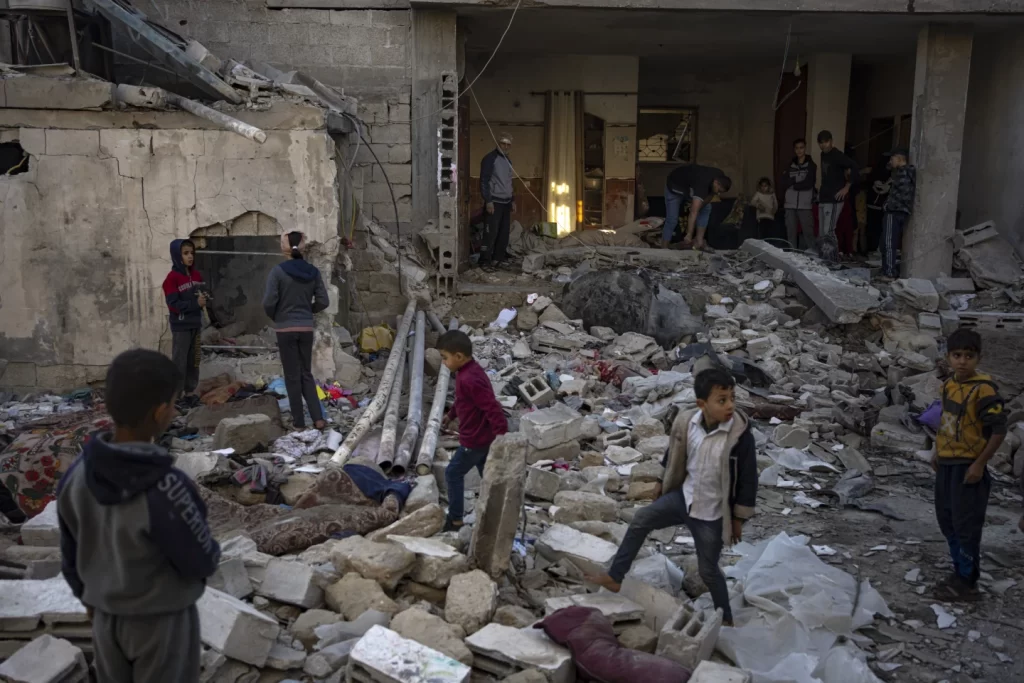
DEIR AL-BALAH, Gaza Strip — Israeli warplanes struck two urban refugee camps in central Gaza on Saturday, as the Biden administration approved a new emergency weapons sale to Israel despite persistent international cease-fire calls over mounting civilian deaths, hunger and mass displacement in the enclave.
Israel says it is determined to pursue its unprecedented air and ground offensive until it has dismantled Hamas, a goal viewed by some as unattainable because of the militant group’s deep roots in Palestinian society. The United States has shielded Israel diplomatically and has continued to supply weapons.
Israel argues that ending the war now would mean victory for Hamas, a stance shared by the Biden administration which at the same time urged Israel to do more to avoid harm to Palestinian civilians.
The war, triggered by the deadly Oct. 7 Hamas attack on southern Israel, has displaced some 85% of the Gaza Strip’s 2.3 million residents, sending swells of people seeking shelter in Israeli-designated safe areas that the military has nevertheless also bombed. That has left Palestinians with a harrowing sense that nowhere is safe in the tiny enclave.
“The (Israeli) occupation is doing everything to force people to leave,” he said over the phone while searching along with others for four people missing under the rubble. “They want to break our spirit and will but they will fail. We are here to stay.”
A second strike late Friday in Nuseirat targeted the home of a journalist for Al-Quds TV, a channel linked to the group Islamic Jihad whose militants also participated in the Oct. 7 attack. The channel said the journalist, Jaber Abu Hadros and six members of his family were killed.
Bureij resident Rami Abu Mosab said sounds of gunfire echoed across the camp overnight, followed by heavy airstrikes Saturday.
With Israeli forces pushing deeper into Khan Younis and the camps of central Gaza, tens of thousands of Palestinians streamed into the already crowded city of Rafah at the southernmost end of Gaza in recent days.
Drone footage showed a vast camp of thousands of tents and makeshift shacks set up on what had been empty land on Rafah’s western outskirts next to U.N. warehouses. People arrived in Rafah in trucks, in carts and on foot. Those who did not find space in the already overwhelmed shelters put up tents on roadsides slick with mud from winter rains.





